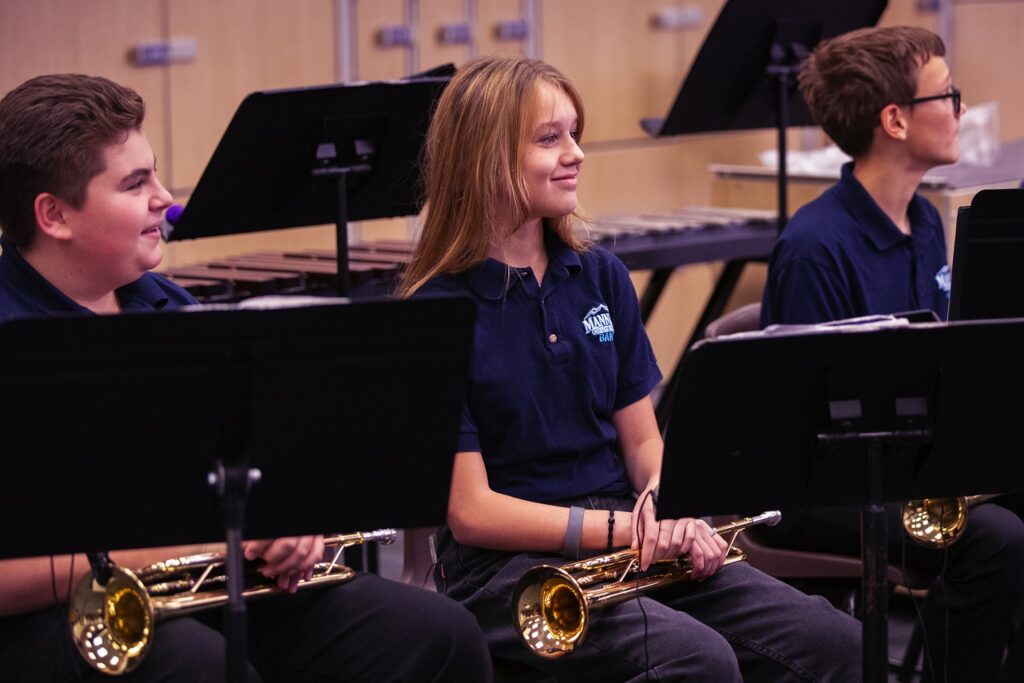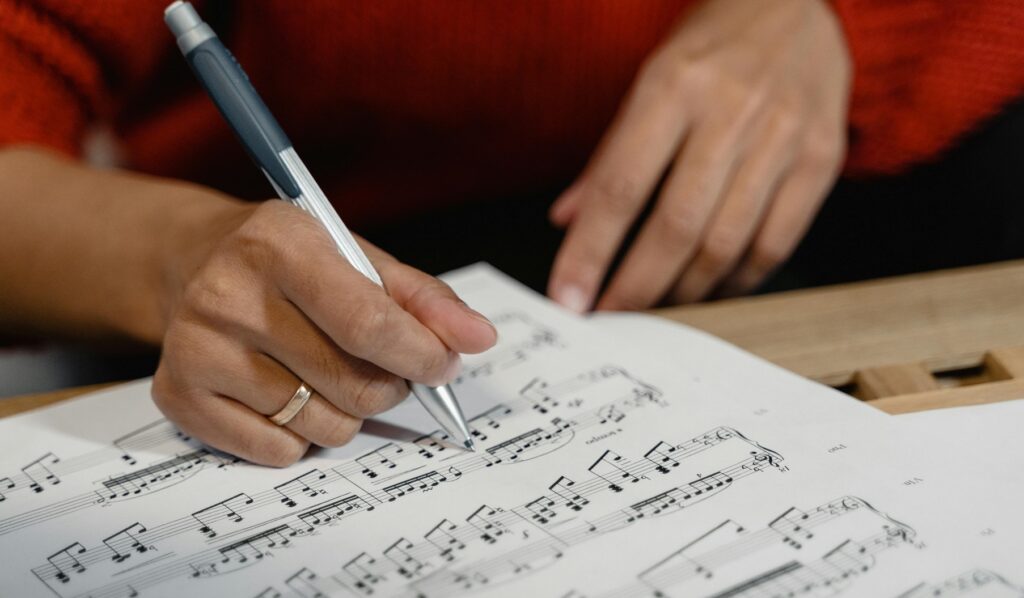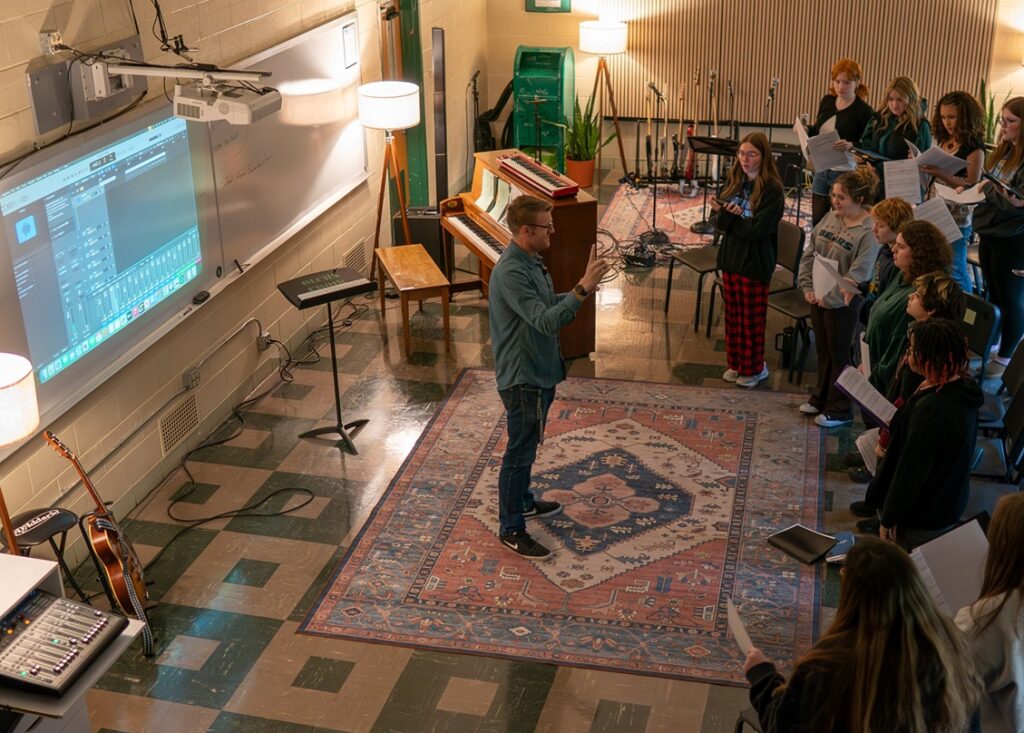Tagged Under:
Teach With Flow: Protect the Time You Have
Try these practical techniques for minimizing distractions, automating routines and engaging students in a truly immersive musical experience.
“Measures 17 to 24: melody, pay special attention to unifying our articulation. Here we go.”
Group plays.
“Thanks. Everything worked out fine, but let’s listen to clarinets and flutes only. Think about your fingerings: always, alternate, never slide. Here we go.”
Flutes and clarinets play.
“Thanks. Now just third clarinets: let’s take it slower and we’re only taking measures 19 and 20. Why?”
“Because we go over the break there.”
“Yes, correct, thank you. Here we go.”
Thirds play. We rinse and repeat, taking it a bit slower and listening to some individuals. We build it back and have the flutes come back in, and then the rest of the band. We followed this format for a while.
We are on track right now.
We play measures 17 to 24 again. We are now one cosmic entity joined by music-making. The time seemingly stands still. However, several minutes have passed, and the bell is about to ring.
“We’re done already?!” the kids ask.
“Almost,” I say. “Let’s take one more run at this section, this time for balance. Are there any questions?”
A trombone player: “Can I go to the bathroom?”
________________________________________
There are two experiences in the classroom that I strive for. One of these experiences is the first time a group plays in tune and the room sings the pitch back to them. This usually happens around late first semester or early second semester if we’ve put the time into tone, balance and intonation. This is an irregular award for us. The first time is the most effective, and while the next step may not be as exciting, it is much appreciated: The concept of where we want our sound to be becomes the new norm that we strive for.
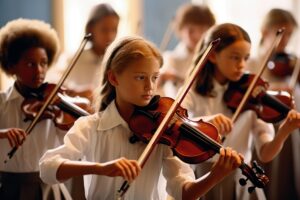
What is Flow?
The other experience is flow. What is flow? Flow is that state of being where you are extremely focused, and time seemingly stands still or conversely it feels like it rushes by. You may have experienced a state of flow when you get lost in a great book or film or, to another degree, highway hypnosis. A trancelike state overtakes you. A state of flow can be rewarding. In some cases, it seems like we’re finally able to shut off the noise that is constantly rattling around our brains from external and internal sources. We are focused on the task at hand and not distracted by things that don’t matter or things that can’t be controlled at this moment. Flow can be difficult to create. Seemingly, the stars need to align, yet when you realize that you are in a state of flow, you can quickly fall out of this.
There is another level to flow. Beyond the individual experience comes the group experience. Not only do we accomplish a lot when an entire group is in a state of flow, but we feel camaraderie and are connected to the human spirit. We often feel like we have created a space where people belong.
We can find examples of flow in the professional world. Think about world-class athletic teams that just seem to be in tune with each other during a high-stakes game. I grew up watching the Chicago Bulls in the ’90s and was fortunate enough to witness Jordan, Pippen and others in this state of flow during their six championship runs. We, of course, hear, see and experience a state of flow during professional musical experiences. But flow isn’t just reserved for the pros. We can certainly strive to have flow as a regular visitor in our rehearsals.

Identifying Flow with the Students
This is one of the hardest but also one of the most important concepts: We cannot force flow to come out at the beginning, but we can certainly create an environment where flow is welcome and will flourish. However, in a “which came first: the chicken or the egg” situation, once teachers notice flow happening, we must point it out to our students. And yes, sometimes that means sacrificing a little bit of flow at the beginning.
The next time you notice that the group is firing on all cylinders, let them know. This does not have to last for a long period; you can certainly get into a state of flow for just a couple of minutes. But find a way to identify it and point out what happened while also relating to other experiences that students might have with flow. Ask questions: “Students, have you ever had a time where you got lost in what you were doing, whether it was reading, cooking, dancing, listening to music or even playing your instrument? What happened to the time? When deep into a good book or conversation with a friend, did you notice the world around you?”
Now relate this to music. Maybe students have spoken to you before about being nervous about a concert, and then not realizing how quickly the concert was over. This is a state of flow — it may have been induced by nerves and fight-or-flight responses, but hey, we will take the analogies when we can get them.
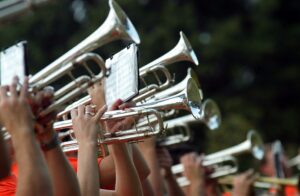
Forcing Flow
Now I already said that we cannot force flow to come out at the beginning — but what I should have said that we can’t force it to come out easily. However, there are a few methods that we can use to get our students more focused, which in turn may coax out some flow.
Try this: if there is a passage of music that is not quite there yet but within reach simply through repetition, set the stage for some almost trance-like work. This should be a section of music where everyone performs. If this does not exist in the music you have programmed, then consider using an exercise from a method book. For these exercises, break down a short chunk of music, maybe four to six bars. Go over a few intricacies — maybe the trumpets could use an alternate fingering on a specific note to adjust intonation without sacrificing their embouchure, or maybe explore some trill fingerings for the flutes.
I set a metronome, quietly. I might even use an old pendulum-style metronome that requires students to focus to see or hear it. If I’m using the Yamaha Harmony Director, I turn down the volume as low as it can go while still being audible with no playing going on. And then, we begin about 20 clicks under tempo. If it’s successful the first time, I go up one click. If it’s a trainwreck and I know that it won’t get better with repetition (or that it might even be imprinted incorrectly if we keep going), then we stop and adjust. Then, we go back to the metronome.
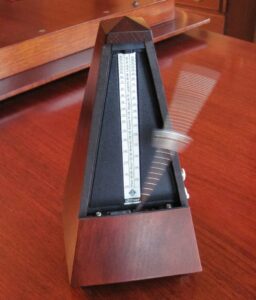
We begin again 20 clicks below tempo, and we increase by one click for every single rep. We do not play on — we only play the designated measures. For younger groups, consider having students put Post-Its over the measures preceding and succeeding the bars you want to be played so the distraction is blocked out.
There is little feedback in between reps, if any. Rather, I change the metronome to increase by one click. I signal the group, and we repeat it again. If any issues are moving faster, we simply repeat the measures at the current tempo at least one more time.
When we’re about 10 clicks away from the target tempo, I notice that the group begins to get into a groove. They are not scattered, nor are they trying to distract each other, or, for what it’s worth, even paying attention to each other that much. They are focused on the task at hand. We keep moving — one click, one more click, eight more clicks. We are now at the target tempo, but I don’t tell them. I go at least four more clicks.
When it gets challenging, particularly around four clicks above the target tempo for a quicker piece, I notice that students start to break a little bit. They get nervous because the segment gets more difficult. Some students laugh, others start to clench their instruments a little tighter. This is when I tell them that we are actually above tempo.
“You traitor!” I hear from a trombone player. It’s always a trombone player, but I let it slide. And then we go back to the target tempo, where we can now play the measures with correct notes and rhythms at tempo. We then discuss our state of mind during this time.
Admittedly, a few kids stated that they got a bit bored with it at first, but that pushing forward one click at a time consistently did put them in a state of focus. They forgot about their other classes for a bit, and their problems with friends, parents or home life.

Focus Isn’t Just Avoiding Distractions
True focus in a music classroom goes beyond simply not being distracted or avoiding off-task behaviors. It’s about an active, intentional engagement with the music at hand. In this context, focus means fully immersing oneself in the nuances of the piece being played, understanding the interplay of different parts, and being mentally present in each note and rhythm.
It’s not merely about students refraining from talking or not playing their instruments at inappropriate times; it’s about them actively listening, analyzing and contributing to the collective musical experience. It’s the difference between waiting your turn to play and actively listening to the tone the flutes are performing with, even if you’re a percussionist.
Focus is when our students begin to adjust their volume and intonation to blend and balance with another part. In short, students become focused when they are guided to take more control over their learning and performance.
Routines to Automate
Establishing automated routines as students enter the classroom is essential to create an environment for focused learning and to minimize decision fatigue. Upon entry, students could encounter a clear agenda for the day’s lesson, displayed near the entrance or on a digital screen. This could include the pieces to be rehearsed, specific focus areas for the day (like rhythm or intonation), and any necessary preparation activities (like instrument tuning or warm-up exercises). By outlining these expectations immediately, students can transition from the general school environment to the focused and structured world of music learning.
Additionally, standardized procedures for handling instruments and sheet music, such as designated areas for instrument cases and a consistent method for distributing and collecting music sheets, can streamline the start of class and reduce time spent on logistical details. These are routines we set up early and reinforce until they become automatic.

Protect Classroom Time: Keep Interruptions to a Minimum
I joked in the intro about students being hyper-focused and not even realizing that the bell was about to ring. We were still in a state of flow, and then all the walls came crashing down when a kid asked to use the bathroom.
These situations will happen at times. Use your best judgment, but in my experience, people, including students, counselors, other teachers, phone calls, emails, etc. will interrupt as much of your class as you allow them to interrupt. Some interruptions are unavoidable: if a fire alarm goes off or an intruder drill begins, sorry — these are more important than staying in your state of flow.
When I have a guest clinician out, I let the administration and supervisors know. Magically, we don’t get many interruptions that day. If this is possible with a special guest, then it’s certainly possible during our regular rehearsals (which must be treated just as special as those with out-of-town guests!).
Yes, it’s important to understand that everyone has a job to do. A counselor sending a call slip during your class is just trying to help a student out. A phone call during rehearsal to send a kid to pick up their lunch is important — we all have to eat. Yet, we can also work within our network to adjust or even avoid some of these interruptions. For frequent call slips, I have contacted the counselors and told them exactly what I wrote above: We’re all trying to get a job done. Yet, I politely asked if the call slips, except for emergencies, could wait until after class, or even if they could be distributed equally among classes. We were able to work out an agreement that didn’t just take from the band.
What Do You Do When You Get There?
Enjoy it! A state of flow can be difficult to describe, but it can be one of the most rewarding states that an artist or consumer of art can experience. We are showing students that it is possible in today’s hyper-multitasked world that yes, we can focus on one thing, and we can focus deeply.










